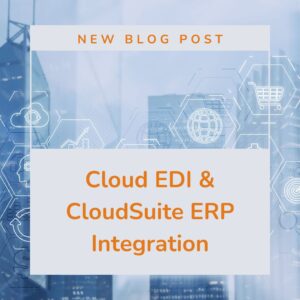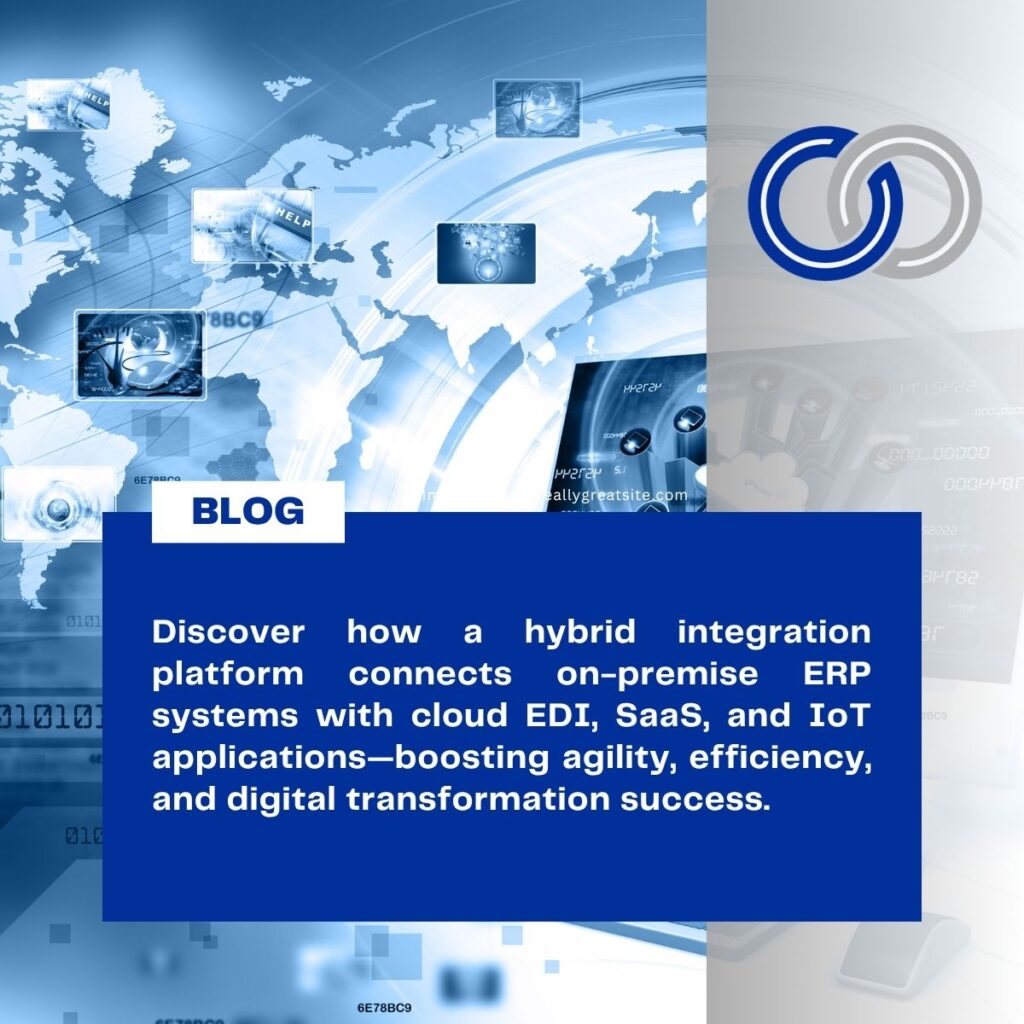
So you finally have a real ERP system with all the bells and whistles that entails. Now it’s time to let go of the web-EDI solution and embrace efficient data exchange, which is crucial for maintaining a competitive edge. Integrating EDI with CloudSuite can streamline operations, reduce errors, and enhance overall efficiency. However, the integration process is not without its challenges. Here’s a guide to help you navigate common pitfalls and ensure a successful cloud EDI and CloudSuite integration.
Understand the Cloud EDI and CloudSuite Integration Requirements
Before diving into the integration process, it’s vital to have a clear understanding of the requirements and capabilities of both your EDI provider and your CloudSuite solution. Each side of the equation has its own set of protocols, standards, and configurations.
- Assess Compatibility: Verify that your EDI provider’s platform and your CloudSuite solution are compatible with each other. Check for any specific integration modules or middleware that may be required. This is where you’ll want to ensure that your provider has extensive experience integrating with CloudSuite.
- Identify Key Data Elements: Determine the essential data elements that need to be exchanged between the systems and ensure they align with both platforms’ data structures. It will also help to clearly articulate what you aim to achieve with the integration, such as improved efficiency, reduced errors, or enhanced data visibility.
Plan for Data Mapping and Transformation
Data mapping and transformation are critical components of a successful managed EDI and CloudSuite integration. Improper mapping can lead to data discrepancies and errors.
- Create a Detailed Mapping Plan: Document how data fields in your EDI system correspond to those in CloudSuite. Pay attention to data formats, units of measure, and other critical details. It will be critical to ensure that your business rules are clearly defined and that your solution is crafted to support them.
- Use Data Transformation Tools: Leverage data transformation tools or middleware that can help convert data from one format to another seamlessly, ensuring consistency and accuracy.
Ensure Proper Security Measures
EDI transactions often involve sensitive data, making security a top priority. How often do you get those data-breach emails? It’s best to avoid having to send those.
- Implement Encryption: Use encryption protocols to protect data both in transit and at rest. This helps safeguard against unauthorized access and data breaches.
- Regularly Update Security Measures: Stay informed on the latest security threats. Ensure both your cloud-based EDI provider and CloudSuite systems are equipped with current security patches and measures.
Test Thoroughly Before Going Live
Thorough testing is essential to identify and resolve any issues before the integration goes live.
- Conduct Unit Testing: Test individual components of the cloud EDI and CloudSuite integration to ensure they function correctly in isolation.
- Perform End-to-End Testing: Execute end-to-end tests to simulate real-world scenarios and verify that data flows smoothly between EDI and CloudSuite.
- Run Pilot Tests: Consider running a pilot test with a subset of data to identify any potential issues in a controlled environment before full-scale deployment.
Establish Clear Communication Channels
Effective communication between all stakeholders is crucial for a successful integration.
- Define Roles and Responsibilities: Clearly confirm with your provider and internally who is responsible for each aspect of the integration process, including development, testing, and monitoring.
- Maintain Open Lines of Communication: Keep all parties informed about progress, challenges, and any changes to the integration plan. Considering a change-management system to avoid confusion.
Prepare for Ongoing Maintenance and Support
Managed EDI and CloudSuite integration is not a one-time task; it requires ongoing monitoring, exception handling and support.
- Monitor Integration Performance: Regularly monitor the performance of your integration to identify and address any issues promptly.
- Update as Needed: Update your ongoing integration as either the EDI requirements or CloudSuite systems evolve. This includes adapting to changes in data formats, protocols, or business requirements. Prospective future partners will have their own set of requirements to navigate for onboarding.
Leverage Expert Advice
Sometimes, the best way to avoid pitfalls is to work with the experts.
- Integration Specialists: Professional firms like GraceBlood, with experience integrating EDI with CloudSuite, can provide valuable insights and help navigate complex issues.
- Vendor Support: Engage with and form long-term partnerships with the support teams from your EDI and CloudSuite vendors for guidance and troubleshooting.
Conclusion
Integrating EDI with CloudSuite can offer significant benefits, but it requires careful planning and execution. By understanding the requirements, planning for data mapping, ensuring security, testing thoroughly, communicating effectively, preparing for ongoing support, and leveraging expert advice, you can navigate common pitfalls and achieve a seamless managed EDI and CloudSuite integration project.
Click here for information about our ERP reseller and EDI partnerships.








